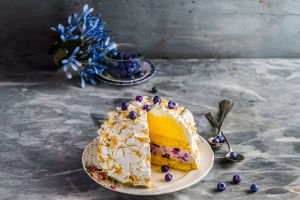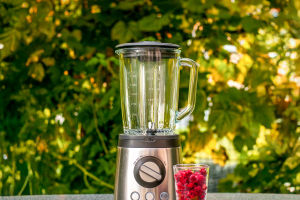Hi Lykkers! Craving that bakery glow with glassy custard centers wrapped in buttery, delicate layers without hours of lamination?
This shortcut egg tart delivers a hybrid Portuguese style: smooth, not-too-sweet custard in a crisp, multi-layer shell made from speedy rough puff. The method is streamlined, the results are luxurious, and the steps are stress-free.
Why This?
Classic egg tarts usually demand multiple doughs or full puff-pastry lamination. Rough puff gives the same shattering bite with far less effort. The custard takes cues from pastel de nata, staying creamy and yolk-forward, while keeping the elegance and lightness of dim sum tarts. Everything bakes neatly in a cupcake pan, so special molds aren’t required.
Styles 101
Portuguese tarts are richer, more caramelized, and deeper in color. This recipe blends both: a flaky rough-puff casing, a silky custard that sets softly, and a gentle sweetness that balances without overwhelming.
Gear List
Cupcake pan, food processor, rolling pin, 3¾-inch cutter, fine-mesh strainer, parchment, pastry brush, fork, and a sheet pan for stability during baking.
Ingredients
Rough puff dough uses flour, powdered sugar, fine salt, cold butter cubes, cold sour cream.
Custard uses egg yolks, evaporated milk, condensed milk, vanilla, a pinch of salt.
Soft butter is used for greasing the pan.
Step Guide
Make the rough puff by pulsing flour, powdered sugar, and salt, then adding cold butter until pea-sized pieces form. Fold in cold sour cream to create a shaggy dough. Press into a rectangle between parchment sheets and roll to half an inch thick. Fold in thirds like a brochure, wrap, and freeze fifteen minutes. Roll again to a thicker rectangle, fold again, and freeze. Divide the dough for easier rolling.
Butter a cupcake pan. Roll the dough to a quarter inch thick, cut rounds, press into the cups, and the bases. Chill while mixing custard.
For custard, whisk yolks, evaporated milk, condensed milk, vanilla, and salt. Strain twice for smoothness.
Heat the oven to four hundred degrees Fahrenheit and place the cupcake pan on a sheet pan. Fill each shell about seventy-five percent full and pop bubbles. Bake ten minutes until edges show color, then reduce to three hundred fifty degrees and bake a few minutes more until centers are softly wobbly but not liquid. Cool briefly in the pan, then transfer to a rack.
Pro Tips
Cold ingredients create flakiness, so chill often if the dough softens. Do not over-process; visible butter creates layers. Straining twice removes bubbles and bits for a glossy custard. Press dough fully into corners to avoid leaks. Remove tarts while centers gently wobble to keep texture soft. Use a sheet pan under the cupcake tray for even heat.
Flavor Tweaks
Add a hint of orange or lemon zest to the custard. Dust warm tarts lightly with cinnamon. Brush finished tarts with simple syrup for shine. For extra flakiness, add an additional fold-and-chill cycle.
Serve and Store
Enjoy warm or at room temperature once the custard has set and the crust is crisp. Store leftovers in the fridge for a day and re-crisp in the oven. The rough-puff dough freezes well for about a month; thaw overnight in the refrigerator before using.
Troubleshooting
Greasy bottoms indicate the butter warmed too much; work colder. Collapsed centers mean overfilling or underbaking; fill three-quarters and bake until delicately set. Blistered tops come from trapped bubbles; skim and pop before baking. Tough shells come from overworking warm dough; chill frequently and roll gently.
Sweet Goodbye
Lykkers, these Unbelievably Easy Egg Tarts bring bakery-level shine to your kitchen with minimal effort: flaky layers, satiny custard, and a method that’s as forgiving as it is impressive. Add zest, a touch of spice, or an extra fold and watch these golden tarts disappear while still warm. Which flavor twist will you try first?


